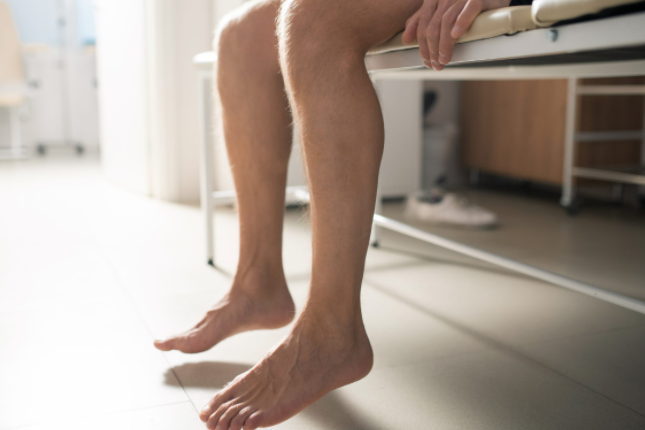
What are bone stress injuries?
Bone stress injuries (BSIs) are overuse injuries and a common reason for visiting my Lane Cove office and getting in the hydrotherapy pool for treatment.
Bone stress injuries, including stress fractures can be frustrating to deal with but the good news is that the earlier a diagnosis is made, the less likely your injury will progress to a complete fracture or more significant injury.
Where do bone stress injuries occur in the body?
Although BSIs most commonly occur in the lower legs and feet, they can occur in virtually any bone in the body when put under particular loading conditions. The physical activity you do not only influences your overall risk of a BSI but also influences where within your skeleton a BSI is most likely to occur.
This includes non-weight bearing zones. For example, rowers repetitively load their rib cage during the drive phase of the rowing stroke and are at risk of generating rib BSIs.
Likewise, overhead throwing athletes put huge forces on the humerus and have a heightened risk of BSIs within the humeral diaphysis.
By knowing the activity that an individual participates in and the associated regional skeletal loading, risk for a BSI at a particular site can be estimated.[1]
The continuum of bone stress injury
Stress injuries to bone exist as a continuum and develop as bone is loaded beyond its capacity to bear the load and repair repeated microdamage.[2]
The commonly used term “stress fracture” is one point on a spectrum of injury that includes bone strain, stress reaction, and stress fracture
Bone stress injuries tend to progress in 3 stages:
- Stress response and mild bone strain: At this stage you may not be experiencing symptoms, but signs of bone stress will be visible on medical imaging.
- Stress reaction: You will likely have localised pain and soreness to the touch on the affected bone that is exacerbated by an activity.
- Stress fracture: A fracture or break causing very pronounced pain has developed in the final stage of the bone stress continuum and is clear on medical imaging. If the stress fracture is in a lower limb, bearing weight on it will probably cause significant pain.
Pain is the most prevalent symptom of a bone stress injury and the first step in its diagnosis
We will ask you when you first noticed the pain, where it started and how it progresses during activities. Is it worse at the beginning, during or at the end of physical activity?
Essentially, as the BSI progresses along the continuum, the longer it takes to recover.
Can pre-participation screening help prevent bone stress injuries?
Some behaviour and activity patterns are more likely to be exhibited by people suffering a BSI and can be examined at a pre-participation screening before starting the sports season.
Activities such as drinking more than ten bottles of alcohol per week, smoking, participation in excessive physical activity with insufficient rest time, a sudden increase in physical activity, and running mainly on hard surfaces are indicators of increased risk.[3]
Your Lane Cove physio is an expert in safely treating bone stress injuries and the hydrotherapy pool is a fantastic way to decrease weight bearing on affected areas while increasing range of movement.
[1] Rizzone KH, Ackerman KE, Roos KG, et al. The epidemiology of stress fractures in collegiate student-athletes, 2004-2005 through 2013-2014 academic years. J Athl Train. 2017;52:966–975.
[2] Kiuru MJ, Pihlajamäki HK, Ahovuo JA. Bone stress injuries. Acta Radiologica. 2004 May;45(3):000-
[3] Patel DS, Roth M, Kapil N. Stress fractures: diagnosis, treatment, and prevention. American family physician. 2011 Jan 1;83(1):39-46.



